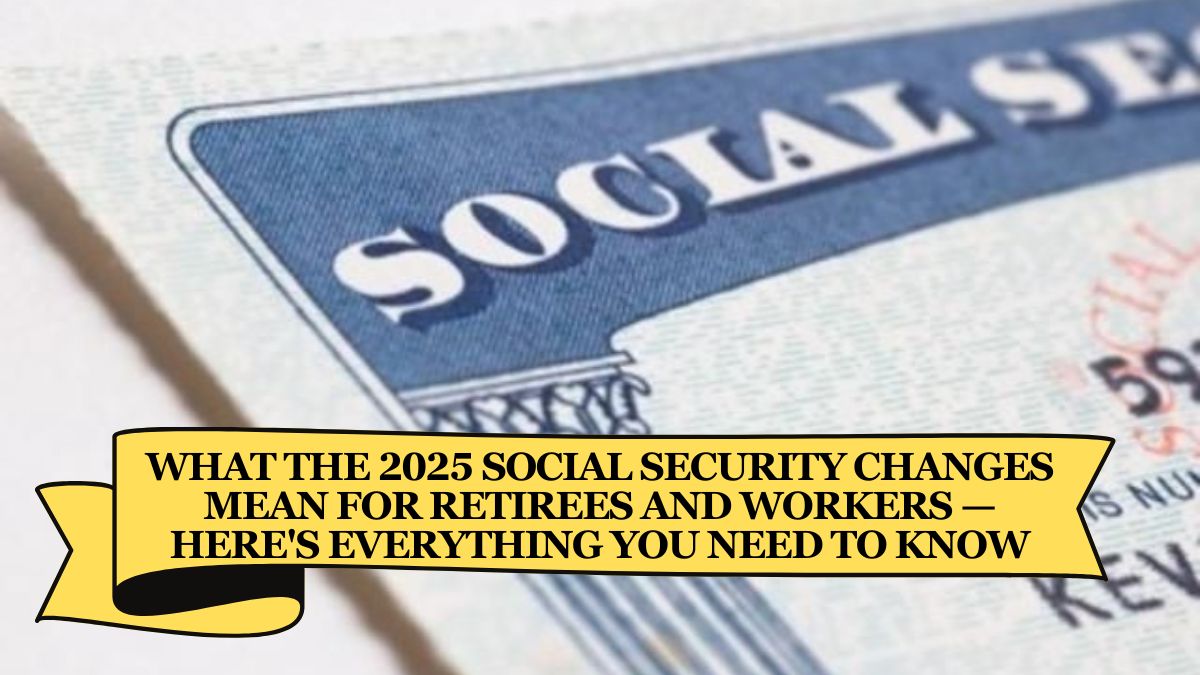Social Security is a vital source of income for many Americans, especially as they grow older. It provides financial support to retirees, people with disabilities, and veterans. Every year, the government makes adjustments to Social Security to help people keep up with rising costs and changes in the economy. In 2025, there are some important updates that will impact millions of Americans who rely on Social Security benefits. These changes are especially helpful for those who are getting closer to retirement or are already receiving benefits. Let’s take a closer look at how these changes could affect you or your loved ones.
Social Security Changes in 2025
The Social Security Administration (SSA) has announced several important changes for 2025 that could affect millions of Americans. These updates are intended to ensure that Social Security benefits keep up with inflation, provide greater support for those with disabilities, and help seniors who are working while receiving benefits. The changes also include adjustments to the maximum taxable earnings limit, which could mean higher taxes for some workers but better funding for the program in the long run.
Cost-of-Living Adjustment (COLA)
One of the most noticeable changes for Social Security recipients is the cost-of-living adjustment (COLA), which helps benefits keep up with inflation. In 2025, Social Security benefits will increase by 2.5%. While this isn’t as large as previous increases—like the 8.7% COLA in 2023—it’s still an important adjustment to help beneficiaries cover the rising costs of goods and services.
For example, if you’re receiving Social Security payments, this adjustment means you could see an extra $50 each month on average. This may not sound like a lot, but it can add up over time, helping people maintain their purchasing power despite inflation.
Maximum Social Security Benefits
The maximum amount a person can receive from Social Security has also gone up. In 2025, the maximum benefit for someone retiring at full retirement age (FRA) has increased to $4,018 per month, up from $3,822 in 2024. If you wait until the age of 70 to start claiming your benefits, the maximum amount could reach $5,108 per month. This could be a big boost for those who can afford to delay their retirement and continue working longer.
Changes for People About to Retire
For Americans who are getting ready to retire, there are a few important changes. For those born in 1959, the FRA is increasing by two months, meaning they will need to wait a bit longer to receive 100% of their benefits. Specifically, people turning 66 in 2025 will have to wait until November 2025 to start receiving their full Social Security benefits.
Additionally, the maximum taxable earnings limit has increased. This means that higher earners will pay more in Social Security taxes, which will help keep the program financially healthy. In 2025, the limit is set at $176,100, up from $168,600 in 2024. While this will result in higher taxes for some, it’s a necessary step to ensure the long-term stability of Social Security.
Social Security Changes for People with Disabilities
Americans who receive Social Security Disability Insurance (SSDI) benefits will also see some important changes in 2025. For people living with disabilities that make it hard to work, SSDI provides a vital safety net. The SSA has raised the earnings limit for SSDI recipients, which means that some people will be able to earn more money before their benefits are affected.
In 2025, the earnings threshold for most SSDI recipients is $1,620 per month. For people who are legally blind, the limit is even higher, at $2,700 per month. This increase allows more flexibility for people who are working part-time or doing freelance jobs while still receiving SSDI benefits.
Veterans and Social Security Benefits
Veterans who receive Social Security Disability or Compensation Benefits will also see an increase in their payments in 2025. The COLA increase of 2.5% applies to veterans’ benefits as well. This is important for veterans who rely on these payments to support themselves and their families.
Furthermore, there may be increases in compensation rates and coverage for new presumptive conditions, which could help veterans who were previously not eligible for benefits. This expansion is a positive development for many veterans who need extra support.
Changes for Workers Receiving Benefits
Another significant change for 2025 is related to older Americans who are working while collecting Social Security benefits. Many people continue to work part-time or in gig jobs even after they begin receiving Social Security, and there’s a limit to how much they can earn before their benefits are reduced.
The good news for 2025 is that the earnings test limit has increased to $62,160 for those who have reached FRA. This means that if you are earning up to this amount, your benefits will not be reduced. If you haven’t yet reached FRA, the earnings limit is $23,400, and the SSA will withhold $1 for every $2 you earn above this threshold. Once you reach FRA, you can earn as much as you want without any reduction in your benefits.
In summary, the changes to Social Security in 2025 provide valuable support for many Americans, especially those nearing retirement, people with disabilities, veterans, and older workers who are still earning an income. These adjustments help beneficiaries cope with inflation, maintain purchasing power, and encourage people to continue working if they’re able. While the increases may not be huge, they offer important financial relief and ensure the long-term sustainability of Social Security.
The Social Security Administration’s updates are necessary for keeping the program healthy, and the changes are a step in the right direction to ensure that more Americans can rely on these benefits for years to come.
Must Visit: California State Online

